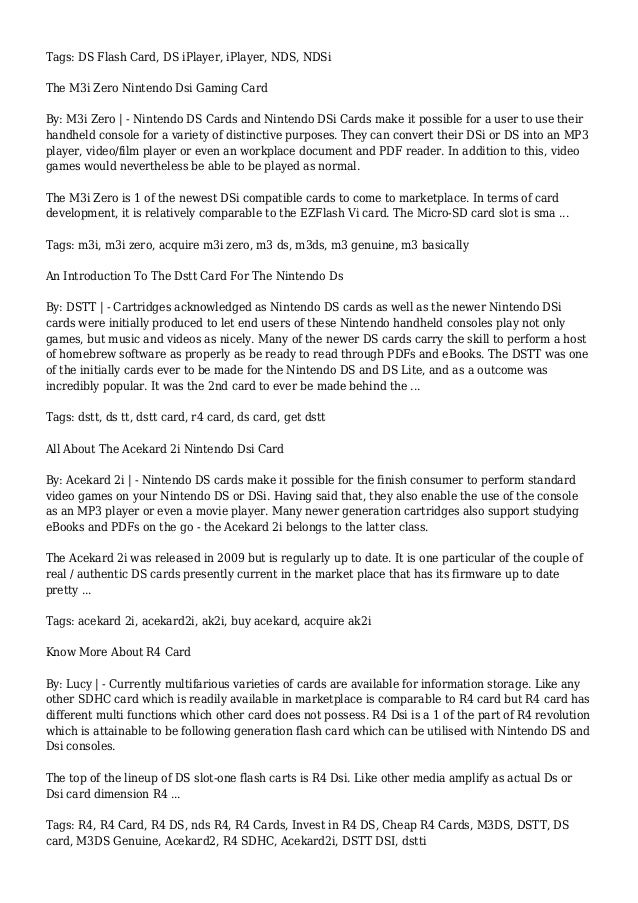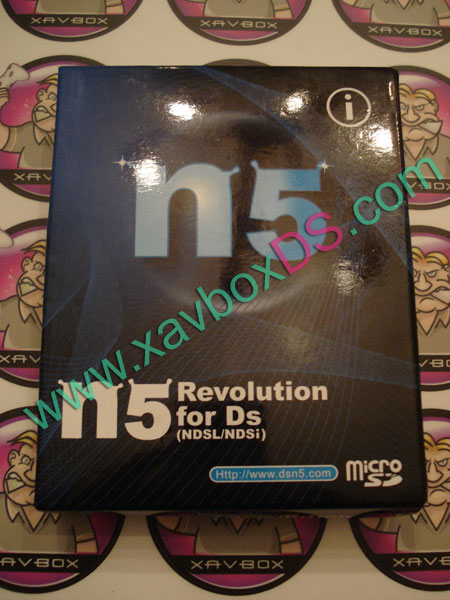
Nds N5 Revolution Software
An official ROM burner used by developers for testing. Nintendo DS and 3DS storage devices are used to store a licensed developer's work-in-progress images,, and downloaded commercial games (since the is not sold with a rewritable storage medium).
N5 is a poor quality clone of the original R4, which is itself a poor card to have now due to its lack of support. (it was the best at one time).
Licensed developers, however, can use a blue Nitro Emulator box to. These devices are also known as 'flashcarts' or 'flashcards'. There are two main classes of flashcarts: older devices which fit in Slot-2 (the Game Pak slot) and newer devices that fit in Slot-1 (the DS Game Card slot). Slot-2 (or first-generation) devices have been historically cheaper due to (inherited from their use with ), but require a in Slot-1 in order to use the touch screen and other DS features.
Second-generation devices (those which only use Slot-1) do not work with GBA homebrew, but as of 2007 became less expensive and easier to use, rivaling many Slot-2 devices in price. First-generation devices include GBA flash cartridges, GBAMP CF, SuperCard, and M3. Second-generation devices include R4 Revolution,, G6 Real and DS-X. Many of these devices also work with the as DS flash cartridges, allowing DS ROM backups to run in game consoles of the. There are also flash cartridges made exclusively for the Nintendo 3DS, such as the Gateway 3DS and Sky3DS, which allow 3DS ROM backups to run in these systems.
The storage device either contains or a slot for a to store homebrew. Storage devices with a memory-card slot usually have more storage capacity than flash-memory devices. Although flash-memory capacity is usually measured in (Mb), memory-card capacity is usually measured in (MB) (where 8 Mb is 1 MB). Storage-device brands differ in their support for homebrew; DS, 3DS and Game Boy Advance; special features (such as ability to play media files); physical size and cost. Strictly speaking, a storage device is not necessary for DS with FlashMe installed because homebrew can be sent to the DS using Wireless Multiboot or WMB. However, this is not an easily portable method because the DS needs to be within range of a suitable card. Main article: The first method of storing applications for the Nintendo DS was the use of designed for the.
Sri lalitha sahasranama stotram telugu. These were effective in finding, since they are a 32 block of rewritable flash memory directly accessible by both CPUs of the Nintendo DS. Users of GBA homebrew tended to use GBA methods for DS homebrew as well; however, the limited storage space, variety and price of GBA flash cartridges make them unsuitable for new users. Since there were many types of flash cartridges (each with its own method for writing to the flash ROM), most homebrew programs only supported saving to the included 64 of intended for game-saving. After the creation of this was no longer a problem, and any program from 2007 or later works with any flashcart. This method of storage does not work with the, since it does not have a GBA slot. GBA Movie Player [ ].
Main article: The (GBAMP) is a adapter for the Game Boy Advance. It supports playing music and movies; NES and Game Boy games (under 200kb) and Game Boy Advance games (under 256kb) from the CF card, and reading text files. Its low price and simple design make it suitable for DS homebrew.
Hacked is available, adding the ability to run DS homebrew while maintaining the GBA features. This is the most widely supported homebrew device; nearly every homebrew which writes to the storage medium supports it.

There are three versions of the GBAMP: a large pass-through device (version 1), a small white-and-red cartridge (version 2) and a slightly smaller version (version 2 SD). Version 2 has the most support.
SuperCard and M3 Perfect [ ] Supercard and M3 Perfect are similar devices to the GBA Movie Player, with more features. M3 is made by the developers of GBAMP. Both contain a CompactFlash,, miniSD, or slot, and 32 MB of built-in RAM. They offer GBAMP's features, in addition to the ability to play all GBA games and homebrew with the built-in RAM as a flash cartridge.